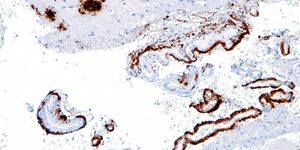Heart disease is the leading cause of death nationally and globally. Using the most advanced 3D printing technology, scientists are one step closer to better, more effective treatments and preventions.
"No two arteries are shaped the same. We're all different, with arteries that have different branches and sizes, tapering from larger to smaller,” said lead author and University of Melbourne Associate Professor Peter Barlis. “And much like debris accumulates along a riverbank, plaque can cling to certain areas of a person's artery. So this technology really gives us a clearer picture of those areas.”
Using a supercomputer with a super-high resolution camera called “optical coherence technology,” scientists from the University of Melbourne have created an enormously useful tool for doctors. They have produced exquisite models of heart disease, designed from and for the patients who need answers for their conditions.
What stent should I use? This is a common question heart surgeons ask themselves when deciding how to treat a blocked blood vessel. With images gathered during a routine angiogram, an x-ray test to test for artery blockage, scientists created a 3D-printed artery from the supercomputer to help them diagnose their patients (
American Heart Association).
Doctors can also detect “hotspots” for plaque build-up, an important step in preventing dangerous cardiac events like heart attacks. Barlis hopes to “tailor devices to fit [each patient] perfectly.” His study was published in the
European Heart Journal.
This new technology creates a unique opportunity for doctors to hold extremely specific heart models in their hands, enabling them to diagnose more accurately than ever. As 3D printing technology enhances, scientists can only dream about what is to come for its applications in science.
Source:
University of Melbourne









